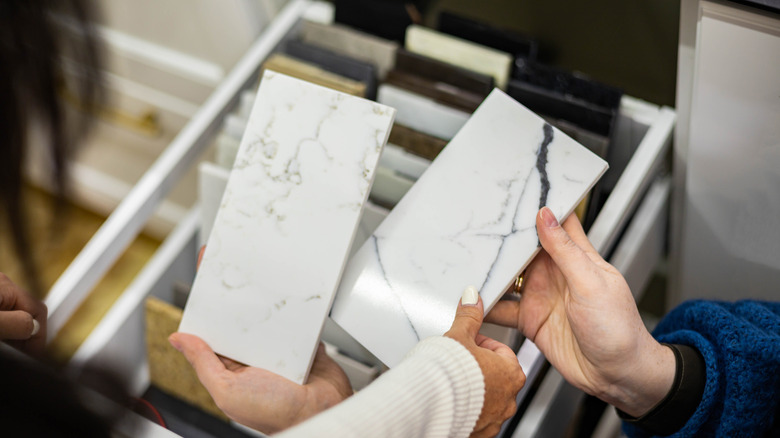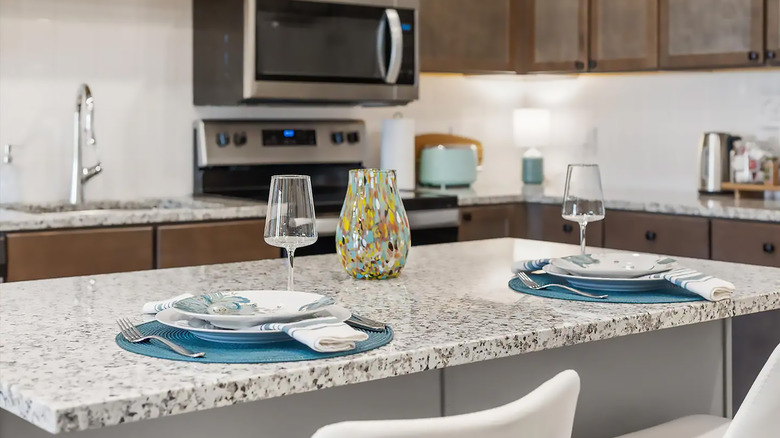Move Aside, Marble: This Is The More Durable Material Taking Over The Kitchen In 2026
When you're picking out a new countertop material during a kitchen remodeling project, it can be all too easy to prioritize visual appeal above practical considerations like cost and durability. If you fall into this trap, you might end up with marble countertops. Though they're stunningly beautiful and often feature veining that's a joy to look at, they're typically less well-suited for the daily commotion that occurs in the heart of the home. They chip quite easily, require regular maintenance, and don't hold up so well against hot pans and appliances. For a solid alternative to marble, try working with granite instead. It's a stronger variety of natural stone than marble, and can still give your kitchen a distinctly luxurious look. In fact, the balance that granite strikes between functionality and aesthetic appeal has ensured that its influence on the kitchen design scene will continue to hold strong in upcoming years.
Dated granite countertops, such as those with tan, brown, or speckled surfaces, often give granite a bad name. However, their looks are far from the only ones available with this type of natural stone. Granite comes in a wide variety of colors, and features an extensive array of veining patterns. As a result, it can be a great fit for modern and contemporary style kitchens. Plus, in a similar fashion to marble, it's often considered timeless, in no small part thanks to its durability. However, if you're planning a remodel soon, make sure to avoid certain granite countertop colors for a more timeless kitchen.
The key reasons why granite often outranks marble
Marble's elegant visual appeal has secured it a long-standing place in the kitchen design scene. However, it has a number of notable drawbacks, especially when compared with granite. The first is its cost. According to Deslaurier, the average marble countertop costs between $80 and $250 per square foot, and the average granite countertop ranges from $75 to $200 per square foot. While the difference between these ranges might not seem too substantial, the cost of marble can actually run a lot higher in the long term because it's much more likely to require maintenance. There are also lots of common mistakes you should avoid if you have marble countertops that can further increase costs.
Another considerable difference between granite and marble is the vulnerability of the surfaces to scratching. Granite is a much harder variety of stone, and won't scratch as easily as marble. On the Mohs scale of mineral hardness, granite typically ranks between six and seven. On the same scale, marble ranges between three and four, which means it's significantly softer.
It's worth noting that granite is also much less likely to stain than marble. Marble is a more porous surface, and as a result, acidic or oily substances can frequently damage it. Marble stains can also result in the development of a patina, which may be a considerable drawback for some homeowners. Granite, on the other hand, is not only stain resistant, but less in need of regular sealing. Instead of constantly worrying about the stone's seal, you can focus on other items in your kitchen that you should clean more often.

